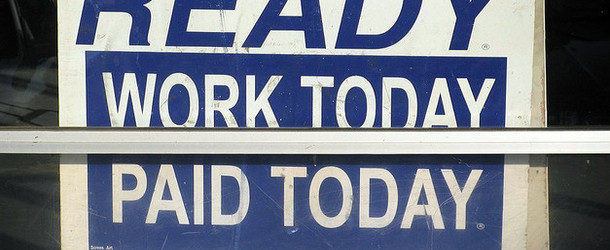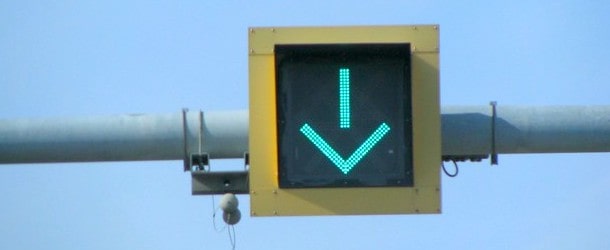
What Happened to Mortgage Rates?
- They hit a record low of around 3% last week
- Then quickly reversed course over the past two days
- Now 30-year fixed mortgage rates are pricing closer to 3.5%
- Because lenders are too busy to offer lower prices
And just like that, they disappeared…
After hitting all-time lows just over a week ago, mortgage rates bounced markedly higher over the past two days.
This despite the continued stock market rout, the emergency Fed rate cut, and the worsening coronavirus, which was just classified as a pandemic.
If anything, you’d think 30-year fixed mortgage rates, which were hovering around 3% early in the week, would be closer to 2.5% today, given all the continued bad news.
But here’s the problem. When you flood the market with anything, mortgage-backed securities in this case, it gets harder to find a buyer. Or at least a buyer willing to pay a high price.
And the only way you can really entice buyers is to lower the price, and when we’re talking about bonds, that raises the yield.
That higher yield means higher mortgage rates for consumers, which explains the massive increase in interest rates over recent days.
If you consider the fact that the 10-year bond yield was as low as 0.32% on Monday, and has since bounced to 0.87%, it also makes more sense.
Call it an overreaction, followed by a quick counteraction, granted the 10-year yield is still in record low territory.
Extreme Ups and Downs Are the New Normal
- All financial markets are experiencing big swings at the moment
- The stock market has plummeted 20% in the past month
- And the 10-year bond yield has fallen to an all-time record low
- Mortgage rates fell quickly and have since recovered, but it might be short-lived
Just like the stock market, which plummeted the most on record, only to rise the most on record the next day, only to fall again massively, mortgage rates are exhibiting some crazy movement.
As Matthew Graham over at MND aptly pointed out, mortgage rates rose at their “fastest pace in years.”
He noted that it was the quickest jump “since the 2 days following the 2016 presidential election,” and one of the few two-day periods in which long-term fixed mortgage rates moved more than three-eighths (0.375%) of a point.
In short, many lenders were offering an interest rate of 3% flat on the 30-year fixed for top loan scenarios on Monday, and now 3.5% to 3.625% is the norm.
Put another way, we’re back to where we were a month ago. At that time, mortgage rates were hovering around all-time lows, but weren’t quite there yet.
Whether things will be even worse tomorrow remains to be seen, but given the sharp increase, we could see a slight improvement tomorrow, or perhaps just flat rates while the market rebalances itself.
Will the Record Low Mortgage Rates Come Back?
- Mortgage lenders raised rates because they got too busy
- They have little incentive to lower rates or even advertise at the moment
- This will rebalance the market and eliminate many borderline refinance applications
- The good news is it will also lead to lower rates once the dust settles and business slows down
Now the next logical question – will mortgage rates return to record lows, given all the uncertainty in the world, and the fact that the 10-year yield is still under 1%?
While nobody can say for sure, if I had to guess, I’d say it’s more probable that rates will head back toward 3% (and below) versus the holding where they are or moving higher.
Similar to the stock market, which was nearing 30,000 a month ago before plummeting 20% to around 23,500 today, we are in a downward cycle when it comes to interest rates.
Sure, the Dow has mustered some big one-day gains as it has marched lower, but the trend has been pretty darn clear – LOWER.
The same should go for mortgage rates too, but if mortgage advertising is any indication lately, it’s going to take some time for lenders to budge.
There’s just so little incentive for them to lower mortgage rates at the moment – they’re already slammed and probably understaffed, so why lower the price?
Remember, it’s better to apply for a mortgage when things are slow.
The good news is lenders are already solving the oversupply problem by raising the price of mortgages.
So all those homeowners who were on the cusp of a mortgage refinance making sense, rule of thumb or not, may have withdrawn their applications, assuming they didn’t lock in their rate.
Even a swing of an eight to a quarter point is enough to eliminate the incentive of refinancing, so a move from 3% to 3.625% will surely rule out millions of homeowners.
This might be enough to right the supply/demand imbalance and eventually allow mortgage lenders to lower rates again.
Whether that takes a week, two weeks, or two months is another question. But for me, the trend is clearly lower.
And if you use the 10-year bond yield as a guide, that puts the 30-year fixed firmly below 3%.
Read more: Quicken Loans CEO Doesn’t See the 30-Year Fixed Falling Below 3%



